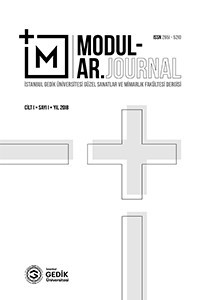
Modular Journal
Yazarlar: Carlos Mourão PEREIRA, Teresa Valsassina HEITOR, Ann HEYLIGHEN
Konular:Mimarlık
Anahtar Kelimeler:Climate change,Health promotion,Integrated invisibility,Loggia,Public space
Özet: This paper presents an exploratory study about multisensory perception in the use of the urban loggia, i.e., outdoor covered space open to one or more sides integrated in the ground level of buildings, providing public shaded walkways and living areas. Due to current temporary occurrences of extreme intensity of ultra-violet radiation and the increasing periods of heat waves, public health risks are increasing, specifically situations of skin cancer and heart attacks as a consequence of excessive sun exposure. Loggia spaces have the potential to generate microclimates, allowing for a shadow shelter with the advantages of passive cooling on paths of pedestrian mobility in building entrances. By reducing energy consumption for indoor temperature regulation and climatization, they contribute to mitigating and adapting buildings to climate change. In literature, the perception of the urban loggia shadow spaces has been studied mainly in two different fields, thermal comfort and visual aesthetics. Exploring spaces that are inviting for all users requires a multisensory research approach, integrating the non-visual sensory modalities beyond the mentioned perception of thermal comfort. The urban loggia has been mainly developed for horizontal circulation on squares, in order to allow the visual perception of geometrical compositions of building facades. Furthermore, other sensory modalities beyond vision, such as auditory and olfactory spatial qualities, are forgotten, resulting in non-stimulating spaces to use. To make the building performance of the urban loggia shadow spaces more inclusive, our research is centered on integrating the diversity of people’s conditions and needs, as far as possible. To this extent, we explored empirical knowledge related with the absence of sight of blind people, keeping in mind that fully sighted and partially sighted people are temporary subjected to lacks of visual attention in the use of the space. The methods used are based on qualitative research and aim to identify a diversity of spatial perceptions, in order to achieve the understanding of the complex reality in study. We interviewed blind people of 18 nationalities, including five continents to achieve a multicultural perception about risks in their use of cities and buildings. Furthermore we conducted participant observation in the absence of sight, in cases of urban loggias. These case studies took place in the city centre of Lisbon, characterized by a Mediterranean climate. The obtained results allowed to identify affordances and consequent atmospheres approaching sensory modalities beyond vision. Moreover, they allowed to identify positive and negative spatial components inherent to the urban loggia. These spatial attributes, following inclusive and multisensory qualities, may contribute to empirical knowledge about how the urban loggia can facilitate the mitigation and adaptation of urban buildings to climate change in Portugal and other countries with similar weather conditions and vulnerabilities.